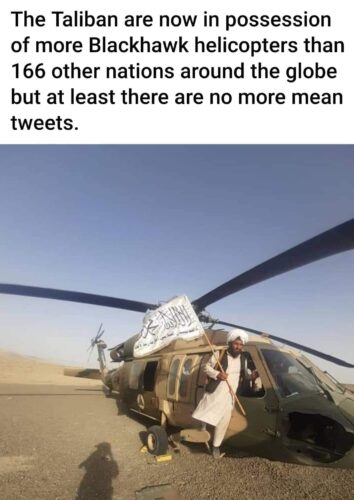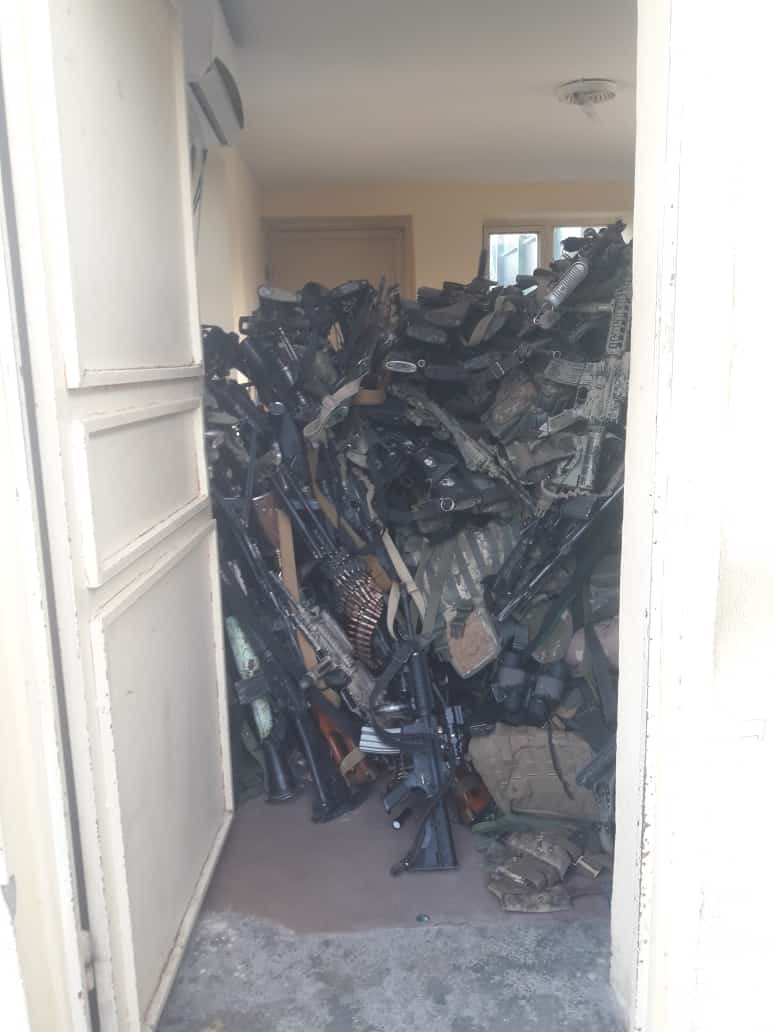tons of #US weapons seized by #Taliban pic.twitter.com/XZUxfbSh3I
— C4H10FO2P (@markito0171) August 16, 2021
As Defense One noted:
The Afghan government also has 50 American-made MD-530 attack helicopters, which are armed with machine guns and rockets. Additionally, the Afghan Air Force flies American-made UH-60 Black Hawks and Russian-made Mi-17 helicopters, as well as C-130 and Cessna transports, and a small fleet of armed Cessnas.

But perhaps the most lethal, notes Defense One:
…are a small fleet of just over two dozen propeller-driven attack planes. These A-29 Super Tucanos were supplied to Afghan forces specifically so they can provide close-air support to their ground fighters. They can fire laser-guided and other types of bombs.
Most of these aircraft operate from just two air bases, according to Military Periscope, one in Kabul and the other in Kandahar. The Taliban took control of Kandahar on Friday, including the airfield.
And Kabul airport will likely soon fall to the Taliban as soon as the U.S. and international evacuation is complete. Defense One adds:
Over the last 20 years the U.S. has given the Afghan Air Force more than 130 aircraft. In July, the Defense Department said it was providing the Afghan Air Force more aircraft—including 35 Black Hawks and three A-29 Super Tucanos—in a sign of continued commitment to the Kabul government even as U.S. forces withdrew. Three of the Black Hawks were delivered last month.
What can be done? “We are always worried about U.S. equipment that could fall into an adversaries’ hands,” Pentagon Press Secretary John Kirby said Friday, reported Defense One. “What actions we might take to prevent that or to forestall it, I just simply won’t speculate about today.”
To prevent these planes from falling into enemy hands, the U.S. could still bomb the aircraft or airfields, but Kirby declined to say if this was still an option.
“I’m not going to speculate about … the destruction of property,” Kirby said.
“Among the items seized by the Taliban are Black Hawk helicopters and A-29 Super Tucano attack aircraft.”
— Josh Rogin (@joshrogin) August 19, 2021
Great, we gave the Taliban an air force.https://t.co/cn6bhfDHRc
PAUL CRESPO
Paul Crespo is the Managing Editor of American Defense News. A defense and national security expert, he served as a Marine Corps officer and as a military attaché with the Defense Intelligence Agency (DIA) at US embassies worldwide. Paul holds degrees from Georgetown, London, and Cambridge Universities. He is also CEO of SPECTRE Global Risk, a security advisory firm, and President of the Center for American Defense Studies, a national security think tank. Reproduced with permission.
Recent and former military officials have told “The Intercept” that the #Taliban have seized #US military biometric devices. These devices can help identify Afghans supporting coalition forces pic.twitter.com/IwyMfNLQhj
— C4H10FO2P (@markito0171) August 18, 2021
